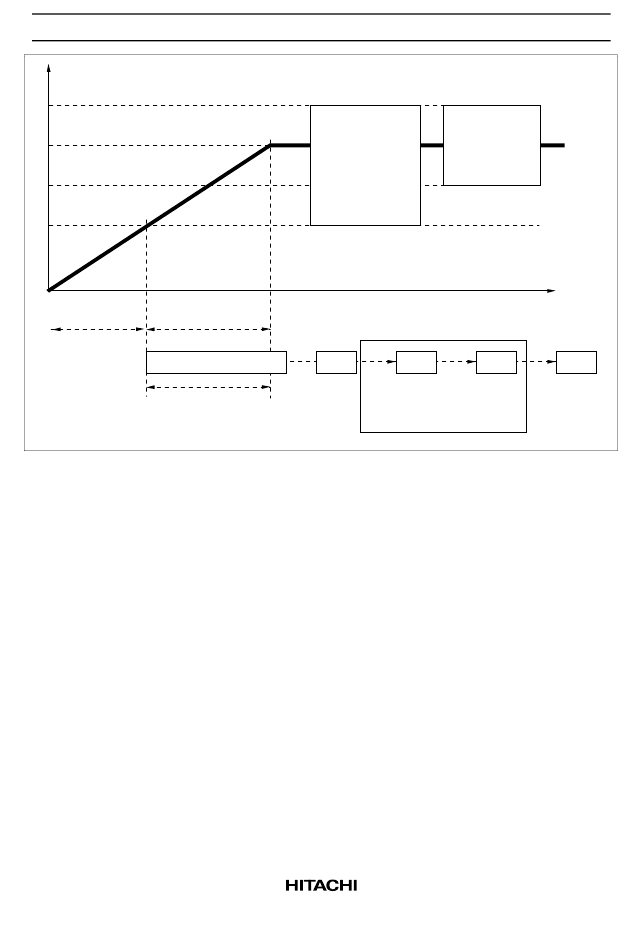- 您現(xiàn)在的位置:買賣IC網(wǎng) > PDF目錄370428 > HB288016MM1 (Hitachi,Ltd.) MultiMediaCard 16 MByte PDF資料下載
參數(shù)資料
| 型號: | HB288016MM1 |
| 廠商: | Hitachi,Ltd. |
| 英文描述: | MultiMediaCard 16 MByte |
| 中文描述: | 多媒體16字節(jié) |
| 文件頁數(shù): | 68/79頁 |
| 文件大小: | 233K |
| 代理商: | HB288016MM1 |
第1頁第2頁第3頁第4頁第5頁第6頁第7頁第8頁第9頁第10頁第11頁第12頁第13頁第14頁第15頁第16頁第17頁第18頁第19頁第20頁第21頁第22頁第23頁第24頁第25頁第26頁第27頁第28頁第29頁第30頁第31頁第32頁第33頁第34頁第35頁第36頁第37頁第38頁第39頁第40頁第41頁第42頁第43頁第44頁第45頁第46頁第47頁第48頁第49頁第50頁第51頁第52頁第53頁第54頁第55頁第56頁第57頁第58頁第59頁第60頁第61頁第62頁第63頁第64頁第65頁第66頁第67頁當(dāng)前第68頁第69頁第70頁第71頁第72頁第73頁第74頁第75頁第76頁第77頁第78頁第79頁

HB288016MM1
68
Initialization delay: The maximum of
1 msec, 74 clock cycles and supply
ramp up time
CMD1
CMD1
CMD1
CMD2
Optional repetitions of CMD1
until no cards are responding
with busy bit set.
3.6 V
2.0 V
2.7 V
Bus master supply voltage
Card logic working
voltage range
Memory field
working voltage
range
Power up time
Supply ramp up time
N
CC
N
CC
N
CC
Initialization sequence
Time
Power-up Diagram
After power up (including hot insertion, i.e. inserting a card when the bus is operating) the
MultiMediaCard enters the idle state. During this state the MultiMediaCard ignores all bus transactions
until CMD1 is received.
CMD1 is a special synchronization command used to negotiate the operation voltage range and to poll
the cards until they are out of their power-up sequence. Besides the operation voltage pro-file of the
cards, the response to CMD1 contains a busy flag, indicating that the card is still working on its power-
up procedure and is not ready for identification. This bit informs the host that at least one card is not
ready. The host has to wait (and continue to poll the cards) until this bit is cleared.
Getting individual cards, as well as the whole MultiMediaCard system, out of idle state is up to the
responsibility of the bus master. Since the power up time and the supply ramp up time depend on
application parameters such as the maximum number of MultiMediaCards, the bus length and the power
supply unit, the host must ensure that the power is built up to the operating level (the same level which
will be specified in CMD1) before CMD1 is transmitted.
After power up the host starts the clock and sends the initializing sequence on the CMD line. This
sequence is a contiguous stream of logical ‘1’s. The sequence length is the maximum of 1 msec, 74
clocks or the supply-ramp-up-time; The additional 10 clocks (over the 64 clocks after what the card
should be ready for communication) are provided to eliminate power-up synchronization problems.
相關(guān)PDF資料 |
PDF描述 |
|---|---|
| HB288096C5 | CompactFlash(閃速CompactFlash 卡) |
| HB288160C5 | CompactFlash(閃速CompactFlash 卡) |
| HB2881000A5 | FLASH ATA Card 1 GByte |
| HB2881000A6 | FLASH ATA Card |
| HB288160A5 | FLASH ATA Card |
相關(guān)代理商/技術(shù)參數(shù) |
參數(shù)描述 |
|---|---|
| HB288032A5 | 制造商:HITACHI 制造商全稱:Hitachi Semiconductor 功能描述:FLASH ATA Card |
| HB288032A6 | 制造商:HITACHI 制造商全稱:Hitachi Semiconductor 功能描述:FLASH ATA Card |
| HB288032C5 | 制造商:HITACHI 制造商全稱:Hitachi Semiconductor 功能描述:CompactFlash⑩ |
| HB288032C6 | 制造商:HITACHI 制造商全稱:Hitachi Semiconductor 功能描述:CompactFlash⑩ |
| HB288032MM1 | 制造商:HITACHI 制造商全稱:Hitachi Semiconductor 功能描述:MultiMediaCard 32 MByte |
發(fā)布緊急采購,3分鐘左右您將得到回復(fù)。